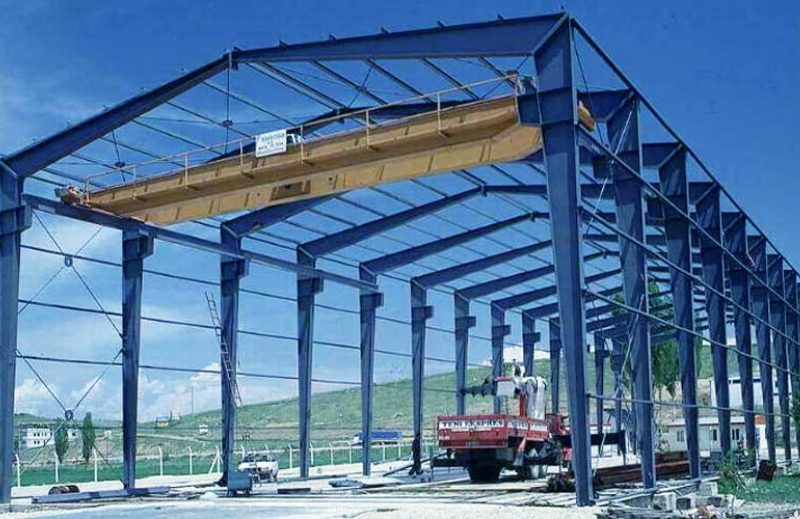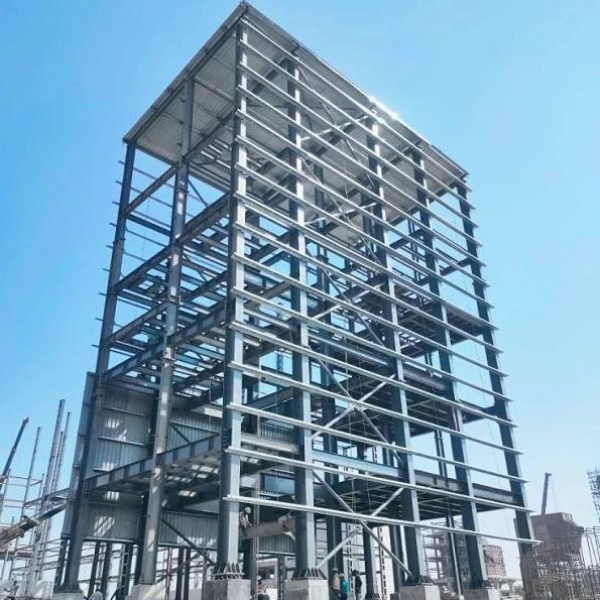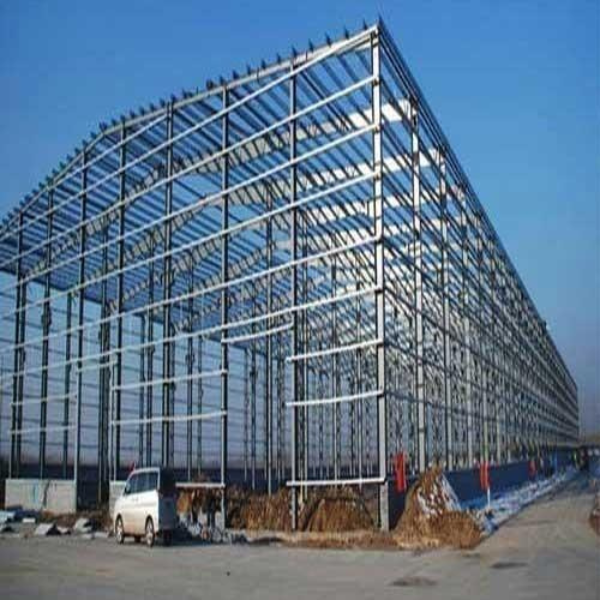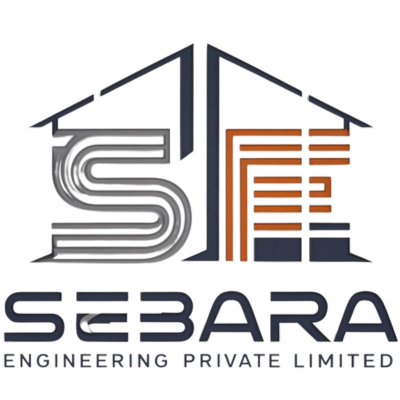Pre-Engineered Building (PEB)
- Home
- Pre-Engineered Building (PEB)



Key Features of Pre-Engineered Buildings
1. Customizable Design
o PEBs are designed to meet the specific requirements of each project. Engineers use advanced software to create detailed designs that maximize structural integrity while minimizing material use.
o The modular nature of PEBs allows for customization in terms of size, shape, layout, and additional features like insulation, ventilation, and skylights.
2. Speed and Efficiency
o One of the most significant advantages of PEBs is the speed of construction. Since components are pre-fabricated, the on-site assembly is quick, often reducing construction time by up to 50% compared to traditional methods.
o This efficiency reduces labour costs and minimizes disruptions to business operations or land use.
3. Cost-Effective Solution
o PEBs are cost-effective due to efficient use of materials, reduced labour costs, and minimized construction time.
o The controlled factory environment ensures minimal waste, which further reduces expenses and environmental impact.
o The long lifespan and low maintenance requirements of PEB structures also contribute to overall cost savings.
4. High Quality and Durability
o Manufactured using high-quality steel, PEBs offer superior strength and durability, making them resistant to harsh weather conditions such as heavy rains, winds, and seismic activities.
o Advanced coatings and finishes protect the steel components from corrosion, enhancing the longevity of the building.
5. Energy Efficiency and Sustainability
o PEBs can be designed to incorporate energy-efficient features such as insulated panels, solar panels, and natural ventilation systems, reducing energy consumption and operating costs.
o The use of recycled steel and environmentally friendly coatings contributes to sustainable construction practices, aligning with green building standards.
Applications of Pre-Engineered Buildings
1. Industrial Buildings
o Warehouses, manufacturing plants, and storage facilities are commonly constructed using PEBs due to the need for large, open spaces with minimal internal supports.
o These buildings are designed to accommodate heavy machinery, cranes, and other equipment, offering flexibility for future expansion.
2. Commercial Buildings
o PEBs are ideal for commercial applications such as retail outlets, showrooms, office spaces, and supermarkets.
o They provide efficient and customizable solutions for businesses that require large and open floor plans with quick construction timelines.
3. Agricultural Buildings
o PEBs are used for agricultural structures like barns, cold storage units, processing facilities, and equipment shelters.
o These buildings can be designed for temperature control and proper ventilation, ensuring the safety and quality of agricultural products.
4. Residential Buildings
o Pre-engineered homes and residential complexes offer a modern, quick, and affordable housing solution.
o PEBs in residential construction provide flexibility in design, allowing for contemporary, eco-friendly living spaces.
5. Specialty Structures
o PEBs are also used for specialized buildings such as aircraft hangars, sports facilities, educational institutions, and medical centres.
o Their adaptability and scalability make them suitable for unique and complex construction needs.
Advantages of Pre-Engineered Buildings
· Faster Construction: Shorter construction timelines due to off-site fabrication.
· Reduced Costs: Optimized material use, labour savings, and minimal waste.
· Sustainability: Eco-friendly materials and energy-efficient designs.
· Durability: Resistant to harsh weather, seismic activity, and corrosion.
· Flexibility: Easy to expand or modify, suitable for a variety of applications.
Why Choose PEB Over Traditional Construction?
1. Time Efficiency: Traditional construction methods involve long timelines and various on-site delays. PEBs, with their pre-fabricated components, eliminate these delays and ensure quicker completion.
2. Cost Control: PEB projects often have better budget control as the components are manufactured in a controlled environment, minimizing material wastage and unexpected costs.
3. Versatility: Unlike traditional buildings, which may require extensive modifications for expansion, PEBs can be easily expanded or reconfigured to suit changing needs.
4. Quality Assurance: Fabrication in a factory environment ensures consistent quality and adherence to engineering standards.
Pre-Engineered Buildings are revolutionizing the construction industry by providing sustainable, efficient, and cost-effective solutions for a wide range of applications. Whether for industrial, commercial, or residential use, PEBs offer unmatched flexibility, speed, and durability.
